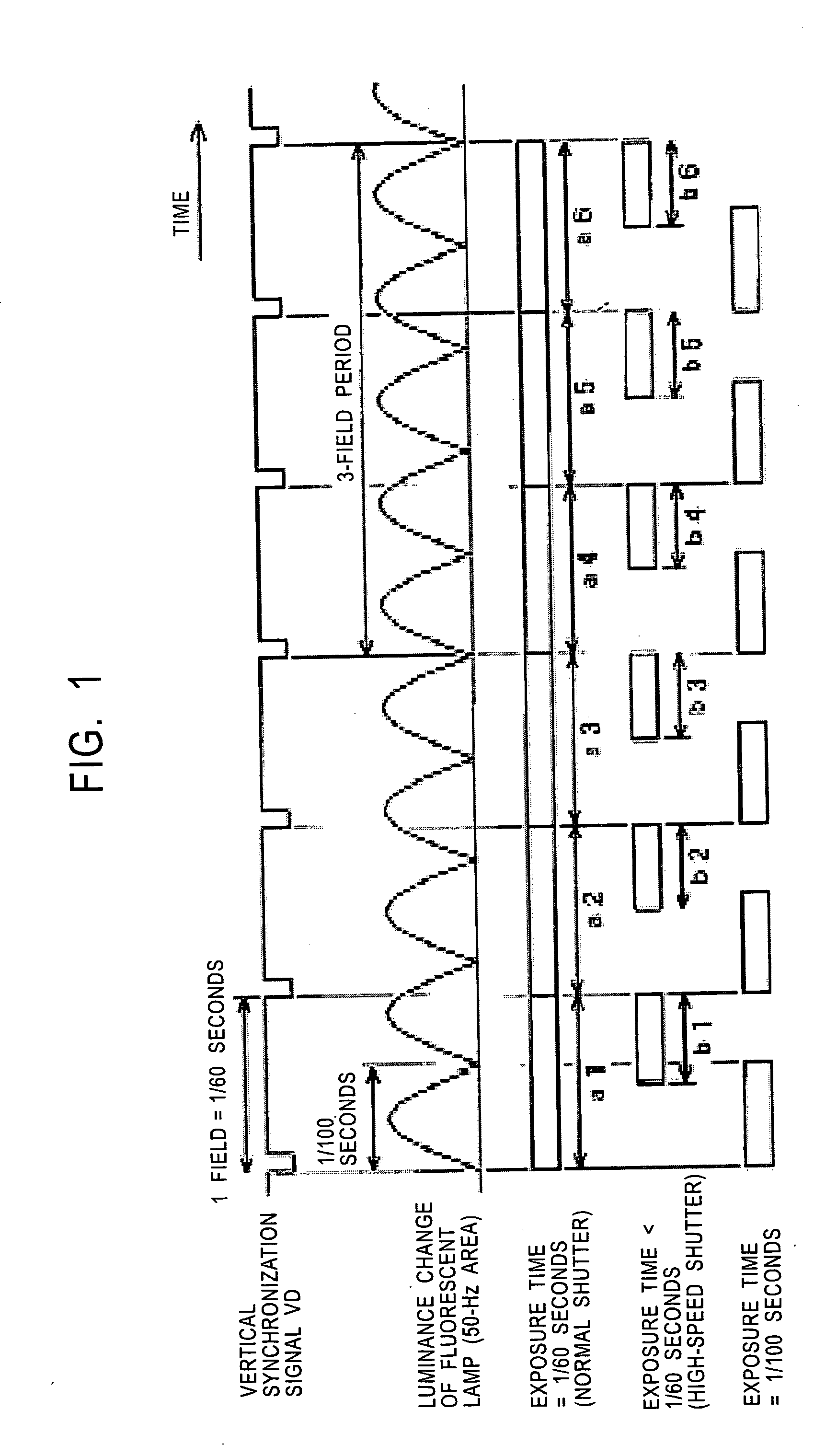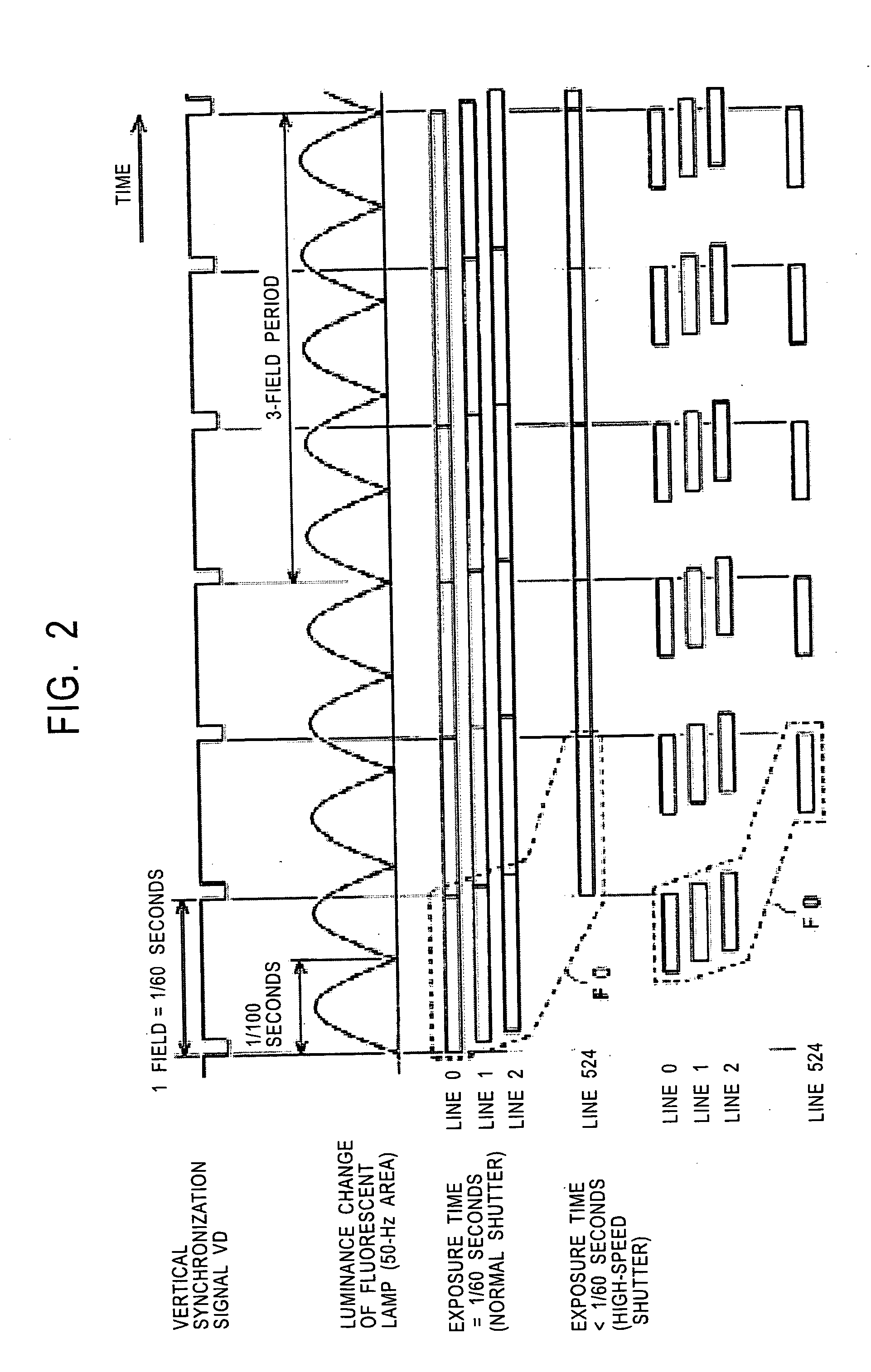Imaging apparatus and flicker reduction method
a technology of image processing and flicker reduction, which is applied in the field of image processing apparatus, can solve the problems of insufficient suppression of flicker, and deterioration of image quality, and achieve the effect of improving image quality
- Summary
- Abstract
- Description
- Claims
- Application Information
AI Technical Summary
Benefits of technology
Problems solved by technology
Method used
Image
Examples
Embodiment Construction
[0087] [Embodiment of Imaging Apparatus: FIGS. 8 and 9]
[0088] (System Configuration: FIG. 8)
[0089]FIG. 8 shows the system configuration of an embodiment of an imaging apparatus of the present invention, and also shows a video camera, which is selectively set to either the NTSC system (fv=60 Hz) or the PAL system (fv=50 Hz) and in which a CMOS imaging device is used as an XY address scanning-type imaging device.
[0090] In the imaging apparatus of this embodiment, that is, the video camera, light from a subject enters a CMOS imaging device 12 via an imaging optical system 11. The light is photoelectrically converted at the CMOS imaging device 12, and an analog video signal is obtained from the CMOS imaging device 12.
[0091] The CMOS imaging device 12 is formed in such a manner that a plurality of pixels having a photodiode (photogate), a transfer gate (shutter transistor)., a switching transistor (address transistor), an amplifier transistor, a resetting transistor (reset gate), etc....
PUM
 Login to View More
Login to View More Abstract
Description
Claims
Application Information
 Login to View More
Login to View More - R&D
- Intellectual Property
- Life Sciences
- Materials
- Tech Scout
- Unparalleled Data Quality
- Higher Quality Content
- 60% Fewer Hallucinations
Browse by: Latest US Patents, China's latest patents, Technical Efficacy Thesaurus, Application Domain, Technology Topic, Popular Technical Reports.
© 2025 PatSnap. All rights reserved.Legal|Privacy policy|Modern Slavery Act Transparency Statement|Sitemap|About US| Contact US: help@patsnap.com



